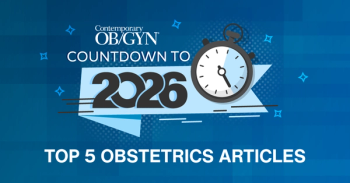
Labor induction during a complicated term pregnancy: When, why, and how
When should you induce labor and what's the best cervical ripening agent to use in these patients? Two experts review the scientific evidence on oxytocin, misoprostol, PGE2, and transcervical balloon catheters and offer practical advice on each.
Cervical ripening agents such as prostaglandins and transcervical balloon catheters have been useful in women with an unfavorable cervix at term, but controversy still exists regarding the safety and effectiveness of cervical ripening agents in women with PROM or specific pregnancy complications. Our goal here is to help the obstetrician choose the best strategy for patients with a medically indicated term IOL. Methods of cervical ripening and IOL included in this article include oxytocin, synthetic prostaglandins E1 (misoprostol) and E2 (e.g., dinoprostone) (PGE1, PGE2), and transcervical balloon catheters (e.g., the Foley catheter).
How do you manage PROM?
Newsletter
Get the latest clinical updates, case studies, and expert commentary in obstetric and gynecologic care. Sign up now to stay informed.




